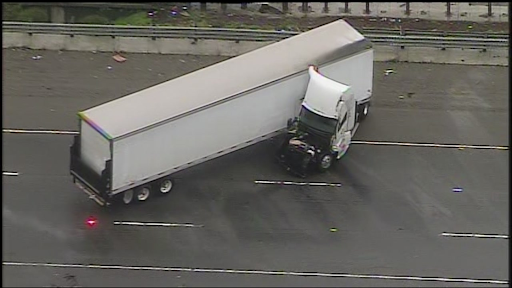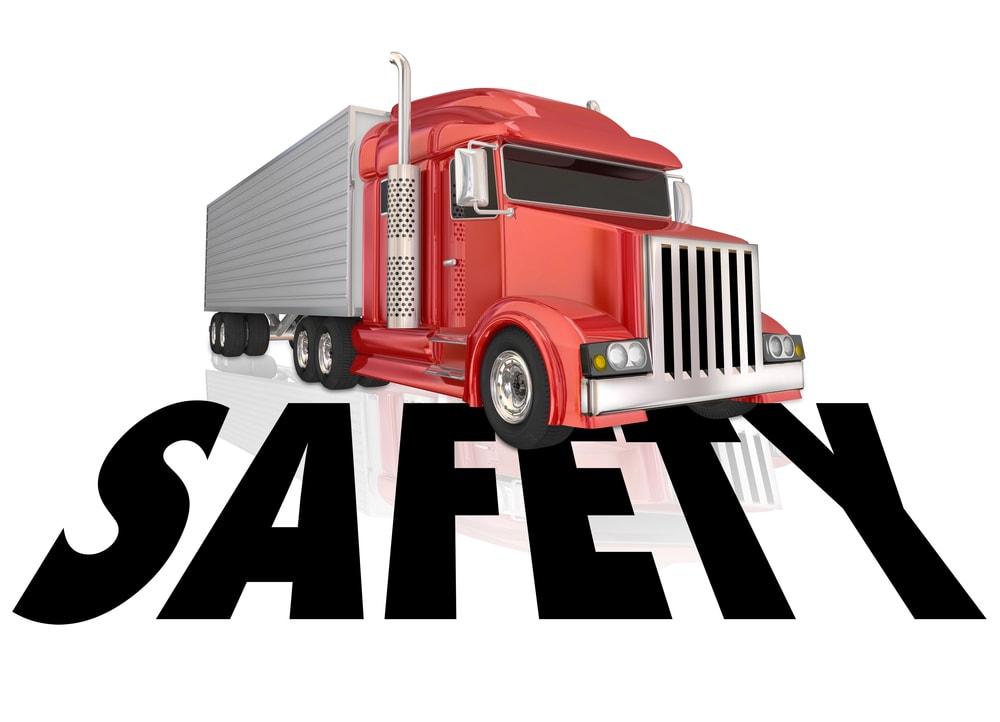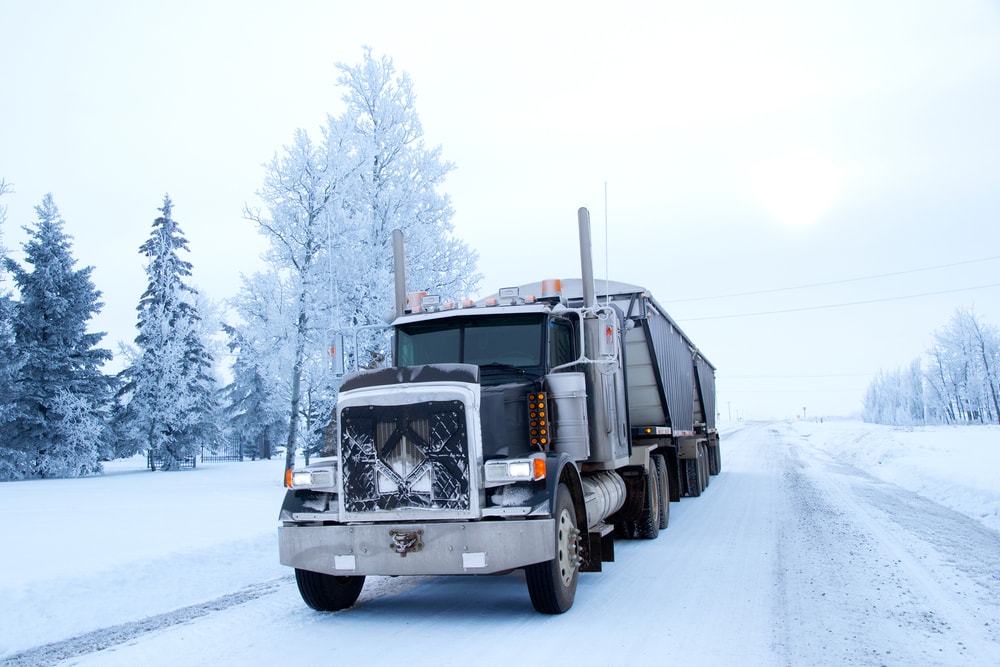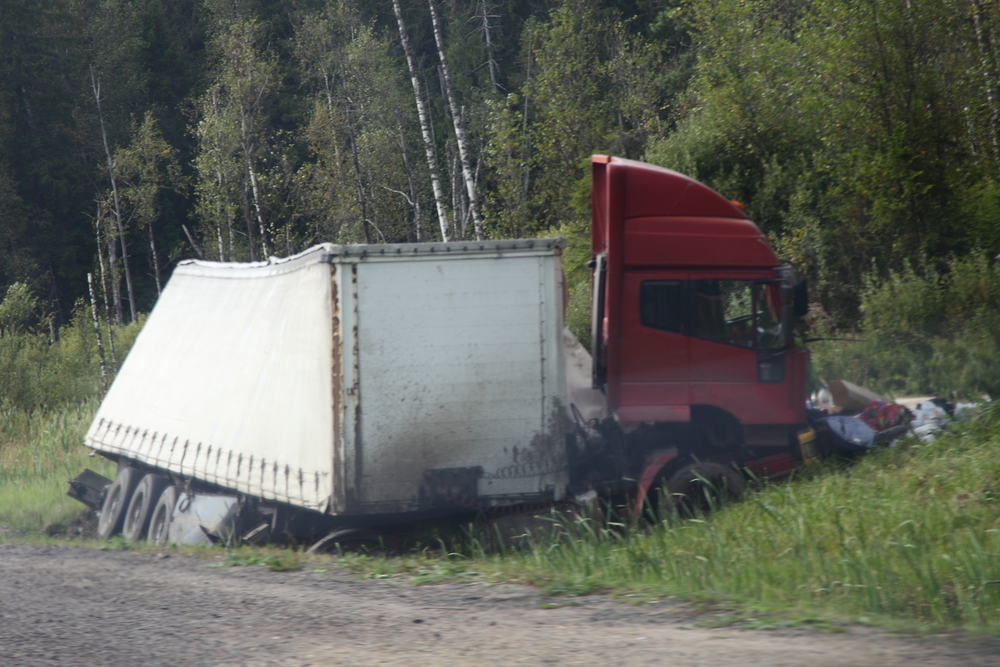Introduction
Jackknifing is one of the major concerns in the trucking industry, particularly during winter seasons when icy roads and poor visibility make the roadways hazardous. A jackknifing truck accident is one in which the trailer swings out of control to form an angle with the tractor. These incidents pose significant risks, not only to truck drivers but also to other vehicles on the road.
The concept of safety within the trucking industry requires addressing causes and preventions. Such incidents, which involve loss of lives and property, could be greatly avoided by drivers and companies through the adoption of appropriate measures.
What is Jackknifing?
Jackknifing is where a trailer becomes unstable and begins to swing out of alignment with the truck tractor, or when the trailer pushes the tractor, mostly in a V or L shape. Such situations occur because the tires from a truck lose traction on the road, causing uncontrollable sliding of the trailer. At times, the phenomenon is referred to as “trailer swing” or “trailer slew.”
There are numerous factors contributing to jackknifing. These can include improper braking, which could include slam-on braking or braking unevenly on one side of the tractor/trailer or another, upsetting the trailer. Winter conditions such as ice and snow drastically raise the risk by decreasing friction available for tires to take a grip on the pavement. Also, sudden stops, sharp turns, or sudden decelerations are some specific situations that could trigger an accident, overloading the trailer. Some real-life examples include icy on and off ramps, sudden traffic slowdowns, or downhill braking on slippery road situations that require increased vigilance.

Weather Conditions and Road Hazards
Winter conditions increase the risk of jackknifing in a semi by threefold. It reduces traction due to snow and ice and also impairs visibility because of the storms. The tires just can’t keep hold of the icy roadways, and the vehicle would be out of control in an instant. Blowing snow or whiteouts impedes proper navigation by hampering the view.
Drivers must remain vigilant about road conditions, slowing down and adjusting their driving to accommodate slick surfaces. Monitoring weather reports and road advisories is crucial to making informed decisions. Traffic congestion also plays a role, as other vehicles may stop suddenly or maneuver unpredictably, creating additional hazards for large trucks operating on icy roads.
Preventative Measures to Avoid Jackknifing
Avoiding jackknifing starts with a focus on vehicle maintenance and cautious driving practices. Ensuring that tires are properly inflated and have sufficient treads is a key starting point. Functional antilock brakes (ABS) are also important for preventing wheel lock-up under abrupt braking. Regular inspection and servicing of a truck’s braking system, windshield wipers, and other components is critical to keeping the vehicle prepared for winter conditions.
Another safety practice is to use controlled braking with light touches, but firm in application, to prevent or reduce skids. Allowing extra following distance gives room for any time to react in the event of an unexpected stop or an interruption of traffic flow. Sand and mats can be employed for emergency traction if the roads become extra slippery; this provides more grip to the tires so the truck can self-correct.

Preparing Your Semi Truck for Winter Driving
Preparation is the key to safely driving in winter conditions. Every semi-truck should have basic winter equipment such as an ice scraper, snow brush, and first aid kit. Also, drivers should have appropriate winter clothes with them to keep themselves warm during emergencies.
Just as important to preparation is the maintenance of the truck’s critical systems. Freezing temperature-rated windshield wiper fluid for good visibility, and keeping the gas tank at least half full to prevent fuel line freezing. Regularly inspect floor mats, tires, and other equipment so that the truck is winter-ready.
Tips for Safe Driving in Winter Weather
Driving safely in winter involves more than just adjusting speed; it requires a proactive approach to handling the unique challenges of icy roads and severe weather. A steady, moderate speed is necessary to reduce the likelihood of skidding or overcorrecting. Drivers must pay close attention to road conditions and anticipate potential hazards, such as black ice or packed snow, which can be nearly invisible. Being alert to changes in weather conditions—such as a sudden drop in temperature or an impending storm—can provide a driver with the time required to make adjustments in driving habits and prepare for worsening conditions.
Sometimes, stopping in a safe place is the best option. This might be at a well-lit rest area, truck stop, or even an emergency pull-off zone. Poor visibility and reduced traction due to blizzards or freezing rain are very likely to result in road accidents. If a driver chooses safety over delivering the cargo on time, then that driver will not only protect himself but also the goods inside his cargo and other motorists as well. Having patience and just waiting until conditions get better is an easy and effective strategy for surviving winter trucking safely.

Federal Regulations and Best Practices for Truck Drivers
Federal regulations give some general guidelines for winter trucking: the equipment must be in good condition, with good brakes, sufficient tire tread, and proper lighting, among others. There are also more specific regulations, such as carrying tire chains in certain areas, wearing seat belts, and reducing speeds on icy roads or when visibility is poor. Together with compliance with strict hours-of-service rules, this minimizes the risks of driver fatigue and the unpredictability of winter weather. These standards put safety first, allowing drivers to operate responsibly in such conditions.
Trucking companies are in a unique position to support driver safety and regulatory compliance through specialized training in how to drive on icy roads, maintain proper braking, and manage emergencies such as jackknifing. Vehicle maintenance, such as routine brake and tire inspections, can also reduce risk. Companies can encourage a safety culture among drivers by providing them with tools like weather apps and emergency kits while encouraging them to communicate openly about road conditions. With safety training and resources, trucking companies protect their drivers and the public while also obtaining many operational benefits and alignment with federal standards.
Responding to Jackknifing Incidents
The best way to handle a jackknifing incident is to stay calm and focus on making steady, deliberate moves to get the truck back under control. Oversteering or hitting the brakes hard will have an adverse effect, and drivers are encouraged to act with gentle steering and controlled braking. If stability is lost, guiding the truck to safety, preferably the shoulder, minimizes the risk from other vehicles and reduces property damage. Staying alert and making quick, calculated decisions is crucial to mitigating the impact of the incident.
After taking control of the situation, the next step should be contacting emergency services. Towing vehicles may be necessary to remove the truck and trailer from the roadway to prevent further accidents. While waiting for professional help, drivers can tend to minor injuries using first aid supplies and take time to document the incident for insurance and compliance. Being prepared with the right training helps drivers handle jackknifing situations more effectively, keeping the impact to a minimum and protecting everyone’s safety on the road.
Why Prevention is Key for Trucking Companies
Jackknifing accidents have significant financial and operational consequences for trucking companies. These are very stressful on a budget disrupted operations, considering vehicle repair costs, delayed deliveries, and jacked-up insurance premiums. Frequent accidents may raise some eyebrows among federal regulators, possibly hurting compliance ratings and ensuring a greater amount of oversight. Taking proactive steps to reduce risks is key to avoiding these issues and preventing a chain reaction of problems from incidents that could have been avoided.
Prevention begins with regular vehicle maintenance and thorough driver training. Periodic checks on brakes, tires, and other vital systems ensure that trucks can operate safely under conditions that may be adverse, especially in winter. Training programs that emphasize safe driving techniques and emergency response prepare drivers to handle icy roads and avoid jackknifing situations. By prioritizing safety, trucking companies not only protect their drivers and cargo but also build trust, reduce risks, and set themselves up for long-term success in the industry.
Conclusion
Winter weather poses a different set of challenges to the truck driver, but the risks can be considerably minimized by being properly prepared and driving cautiously. Understanding common hazards, such as jackknifing, and knowing how to prevent them not only protects the driver but also ensures safer roads for everyone. For both drivers and trucking companies, winter driving demands a shared commitment to vigilance, proactive measures, and adherence to safety practices tailored to the season’s unique demands.
The time to get your truck and yourself ready for winter conditions. Preparation is the best way to stay safe on icy roads, from tire chains to emergency kits. For more tips and expert advice on handling winter weather, check out ShipEX. Safety first, know your facts and take control of your journey through the winter months.
